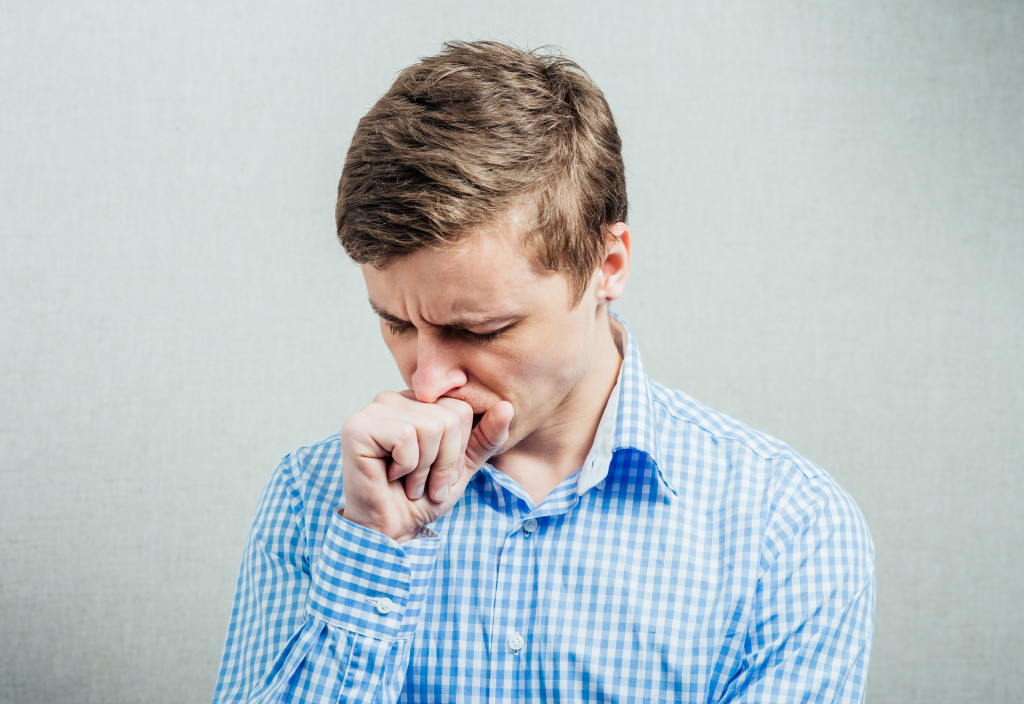• Respiratory diseases range from mild symptoms like coughing and sneezing to more severe illnesses such as asthma and COPD.
• Asthma is a chronic inflammatory condition in which the airways of the lungs are affected, resulting in wheezing, coughing, chest tightness, and shortness of breath.
• COPD (Chronic Obstructive Pulmonary Disease) is a progressive lung disease characterized by difficulty in breathing due to the narrowing of the airways in the lungs.
• Influenza, also known as ‘the flu’, is an infection caused by various strains of influenza virus A through D.
• Pneumonia is an infection caused by bacteria, viruses, fungi, and other agents leading to inflammation and fluid buildup around the tiny sacs called alveoli within the lungs.
Respiratory diseases can be caused by various factors, from environmental pollutants to genetics. They range in severity from mild symptoms like coughing and sneezing to more severe illnesses such as asthma and COPD. It’s important that you learn about these diseases here.
Most Common Respiratory Diseases
Respiratory diseases are pretty common, but some affect millions more than others. Here are some common respiratory diseases in the U.S.
Asthma
Asthma is a chronic inflammatory disease that affects the airways of the lungs. It is characterized by wheezing, coughing, chest tightness, and shortness of breath. These symptoms are triggered by environmental factors such as dust mites or pollen, certain medications, exercise-induced asthma (EIA), stress and anxiety, and allergies.
The primary treatment for asthma is inhaled corticosteroids which reduce airway inflammation and help prevent flare-ups. Other treatments include long-acting bronchodilators which open up the airways during an attack; leukotriene modifiers which reduce inflammation; Cromolyn sodium which prevents the release of substances that cause inflammation; immunotherapy which helps desensitize people to triggers; and biologics that alter the immune system response.

Chronic Obstructive Pulmonary Disease (COPD)
COPD is a progressive lung disease that makes it difficult to breathe due to the narrowing of the airways in the lungs. Symptoms include persistent coughing with mucus production, chest tightness or pain, shortness of breath, wheezing, fatigue or exhaustion with exertion or activity levels reduced significantly compared to before symptoms began appearing.
The primary cause of COPD is smoking, but other contributing factors may include exposure to secondhand smoke and air pollution as well as genetic predisposition or occupational exposures such as dust or fumes in particular industries like mining or construction sites.
Treatment includes lifestyle changes like quitting smoking if applicable; pulmonary rehabilitation involving exercise training; oxygen therapy; medications such as bronchodilators and anti-inflammatory drugs as well as antibiotics if needed for infections/inflammations; surgery for some cases; stem cell therapy for some cases; vaccinations for influenza and pneumococcal infection prevention; and oxygen therapy when needed for relief from shortness of breath during activities.
Influenza (Flu)
The flu is an infection caused by any one of many strains of influenza virus A through D that can circulate throughout the community each year causing illness in humans ranging from mild upper respiratory illness to more severe lower respiratory illness resulting in hospitalization or death in some cases.
Symptoms include fever or feeling feverish/ chills (not everyone will have fever), cough (dry or productive), sore throat runny nose/nasal congestion headache muscle aches/joint pains fatigue (tiredness) nausea/vomiting & diarrhea (more common in children).
Treatment includes antiviral medications within 48 hours when necessary along with rest plenty of fluids good nutrition supportive care such as Tylenol Ibuprofen humidifiers saline nasal sprays etc., depending on individual needs & preferences Vaccination has shown potential benefit in reducing risk & severity at least among certain age groups including young children & seniors who are at higher risk for serious complications & death due to influenza infection annually.
Pneumonia
Pneumonia is an infection caused by bacteria viruses fungi parasites protozoa mycoplasma chemical irritants physical agents radiation environmental pollutants etc., leading to inflammation & fluid buildup around tiny sacs called alveoli within the lungs thereby making it difficult for persons affected with pneumonia to breathe properly & experience other related symptoms including fever body ache chills cough chest pain difficulty breathing abdominal pain headache confusion loss of appetite rapid pulse rapid shallow breathing sweating shivering nausea vomiting, etc., depending on the type of causing agent.
Antibiotics are needed when pneumonia is caused by bacteria of which there are many different types, but other treatments may also involve supportive care such as rest fluids nutrition vitamins & minerals steam inhalation humidifiers bronchodilators oxygen therapy etc., depending on the individual’s needs & preferences.
Preventing Respiratory Diseases
There are some simple ways you can prevent these diseases. Here are some of those ways.

Breathing Exercises
Doing some breathing exercises can make a difference in your life. You can take up online Qi Gong classes to learn some breathing exercises. This exercise uses your diaphragm to regulate the airflow and can be used for relaxation as well.
Avoiding Pollution
When going outside, try to avoid areas with high pollution levels like industrial zones or heavily trafficked roads. Wear a facemask when in these areas. Additionally, make sure you open windows during the day to let fresh air in and avoid using anything that releases chemicals into the air.
Quit Smoking
Smoking is a major risk factor for many respiratory diseases, so if you smoke, quitting is one of the best things you can do to protect your health. Talk to your doctor about resources to help you quit smoking, such as nicotine replacement therapy or counseling.
Respiratory diseases can have a significant impact on your life, so it’s important to take preventive measures and learn about the different types of respiratory diseases. With some lifestyle changes and proper treatment, you can improve your health and quality of life.

